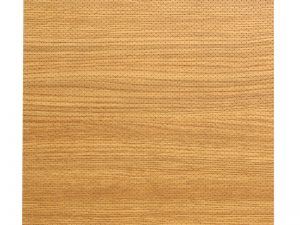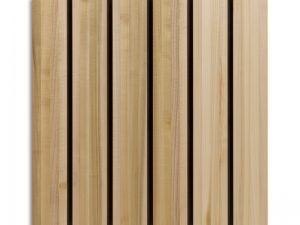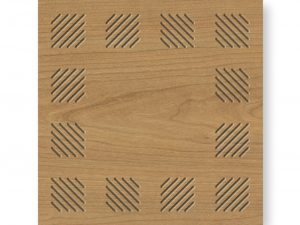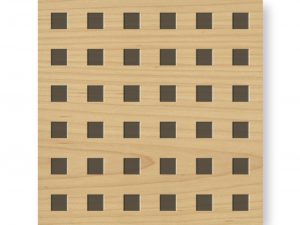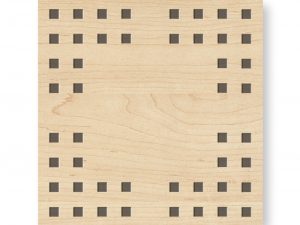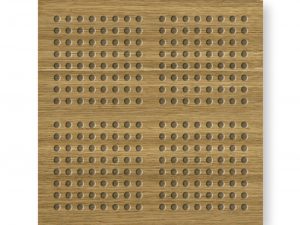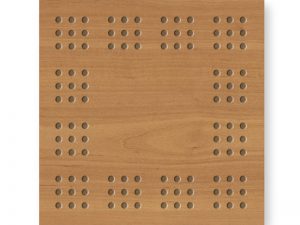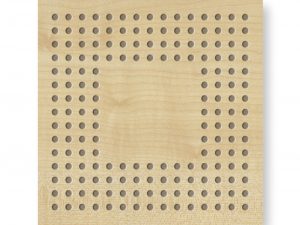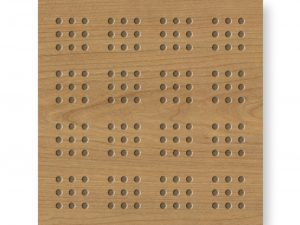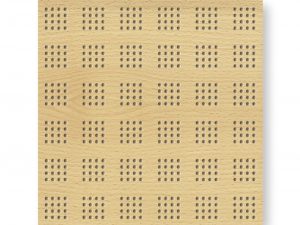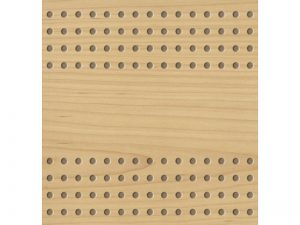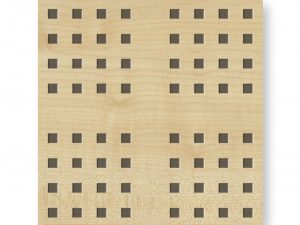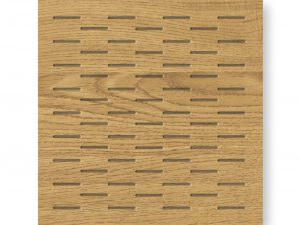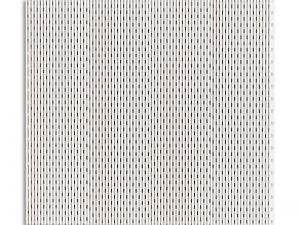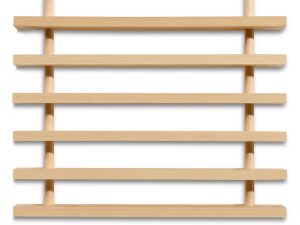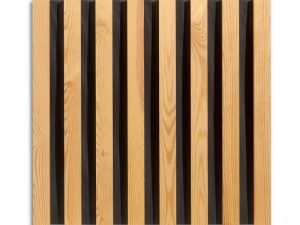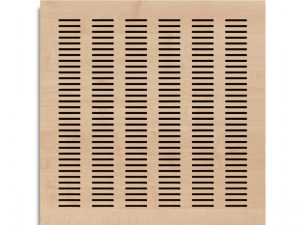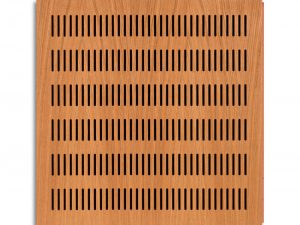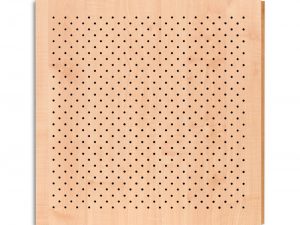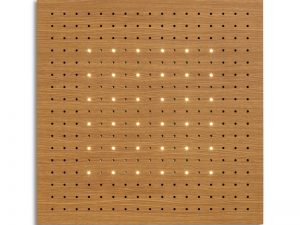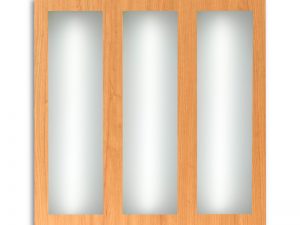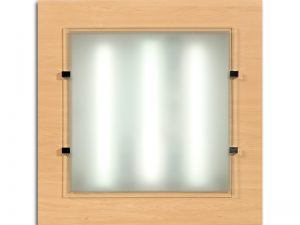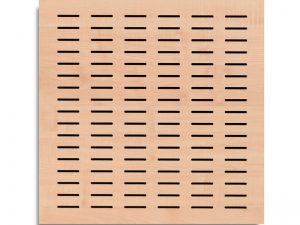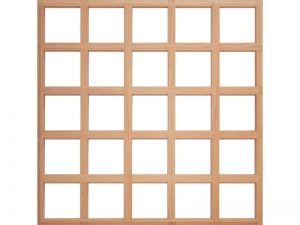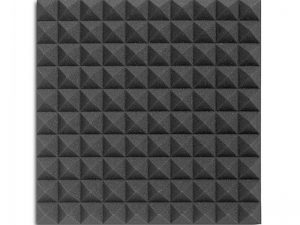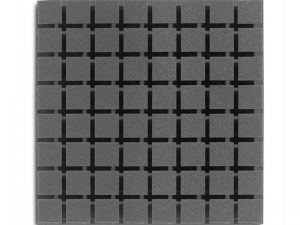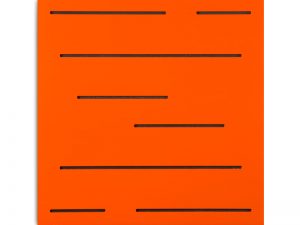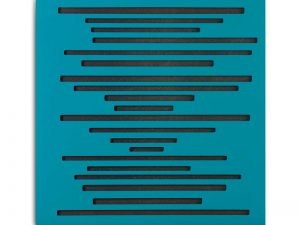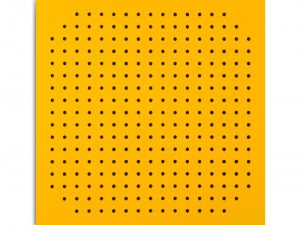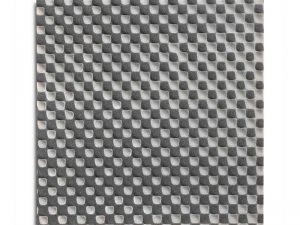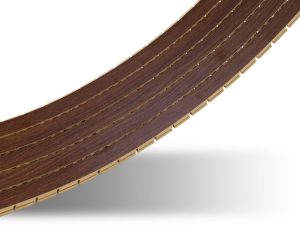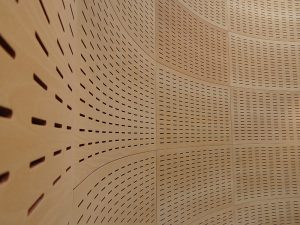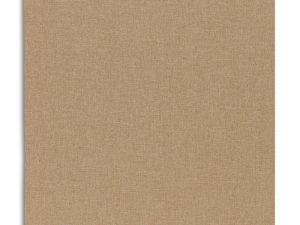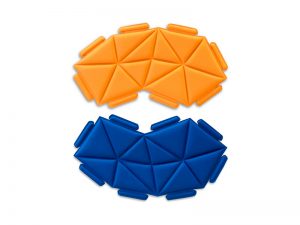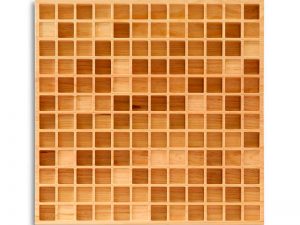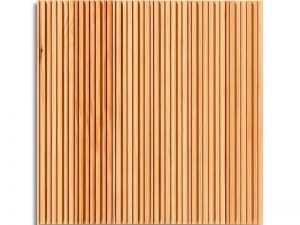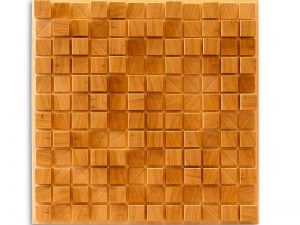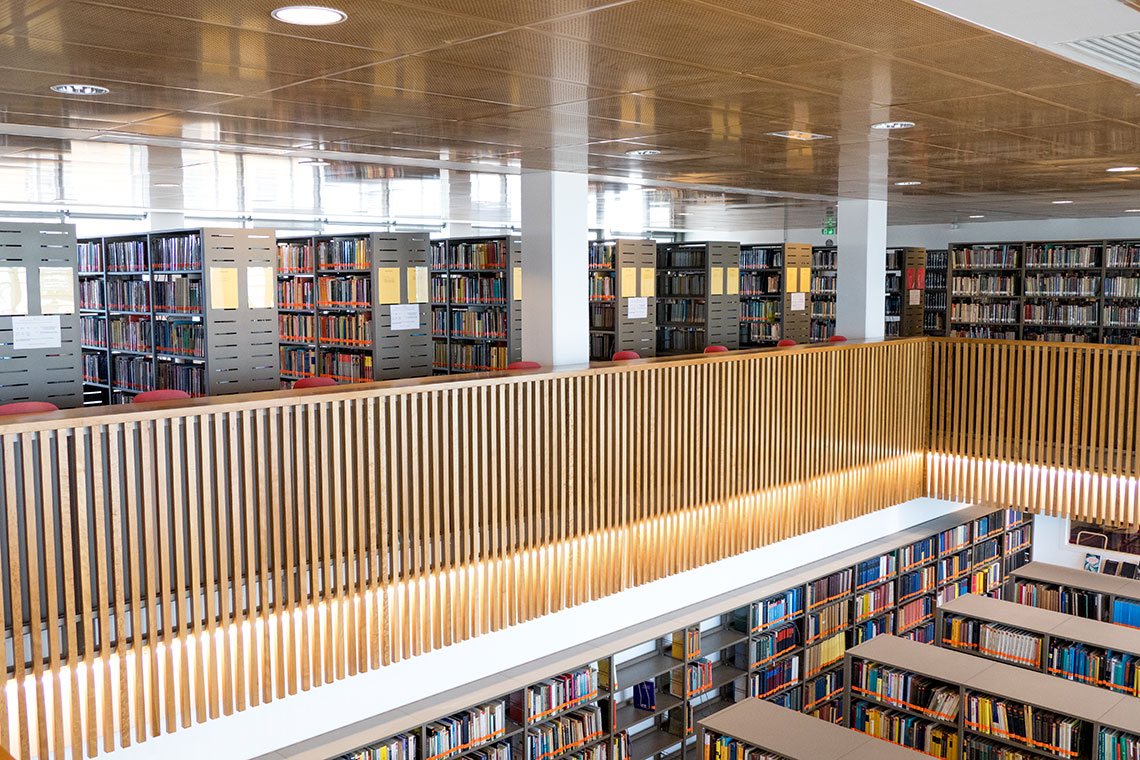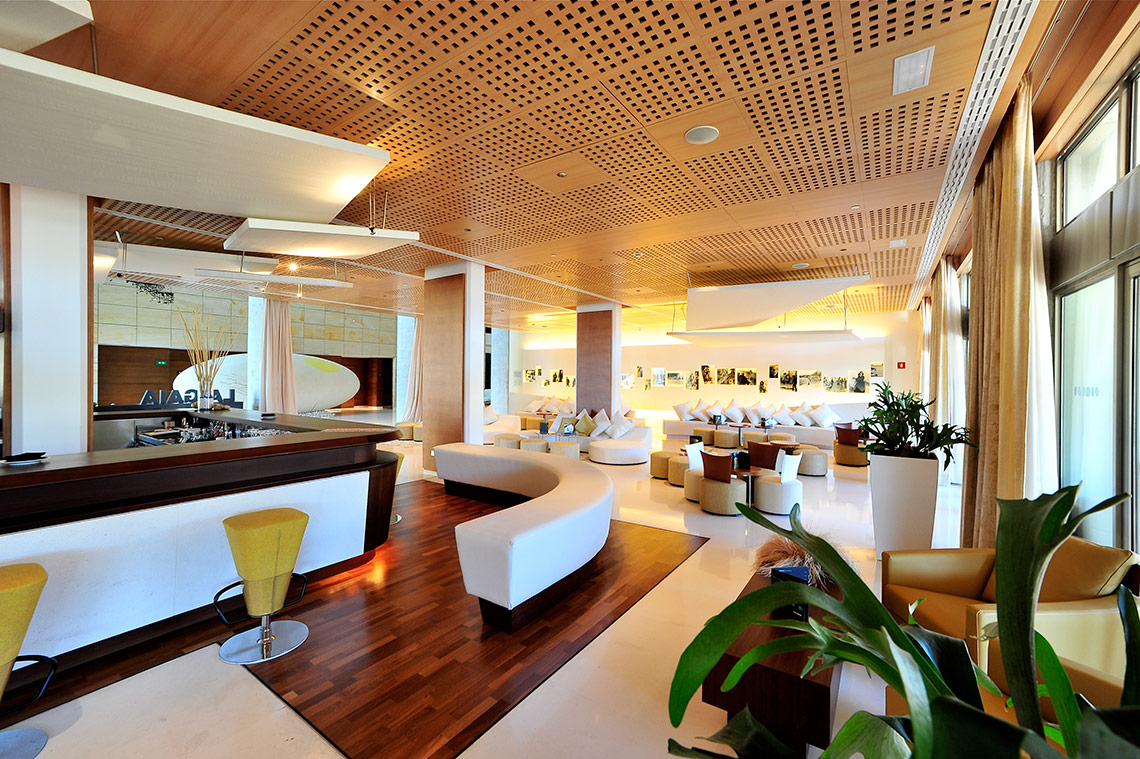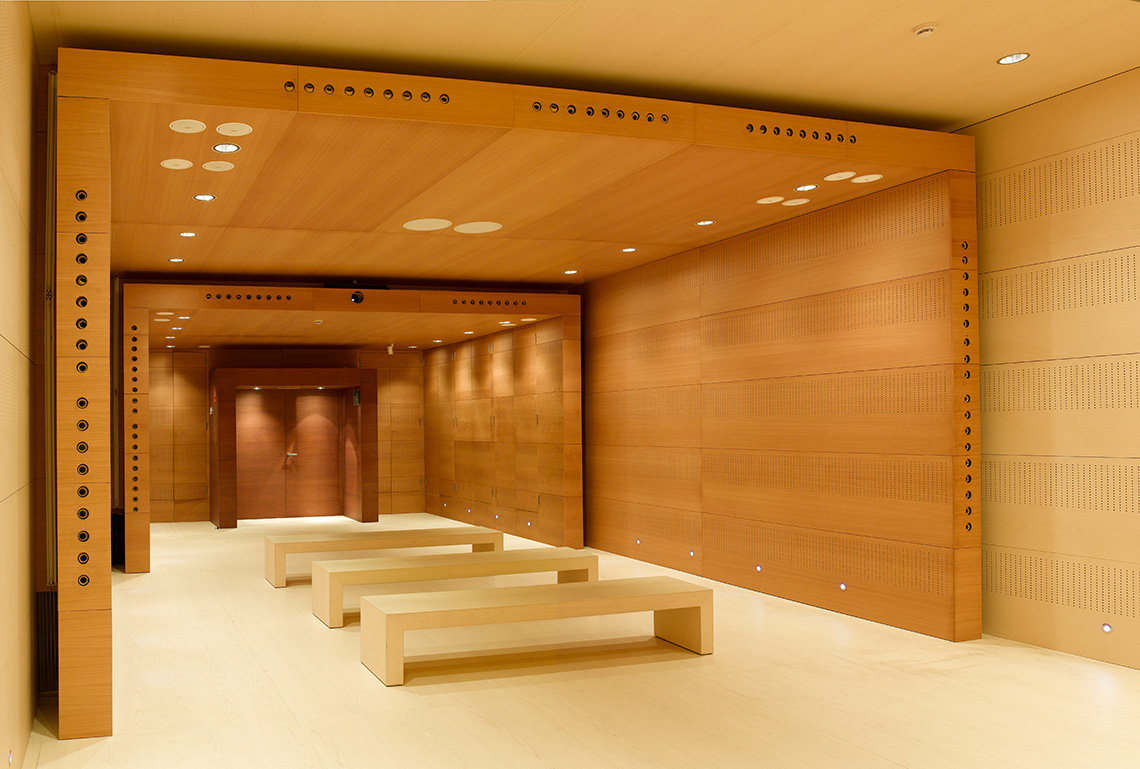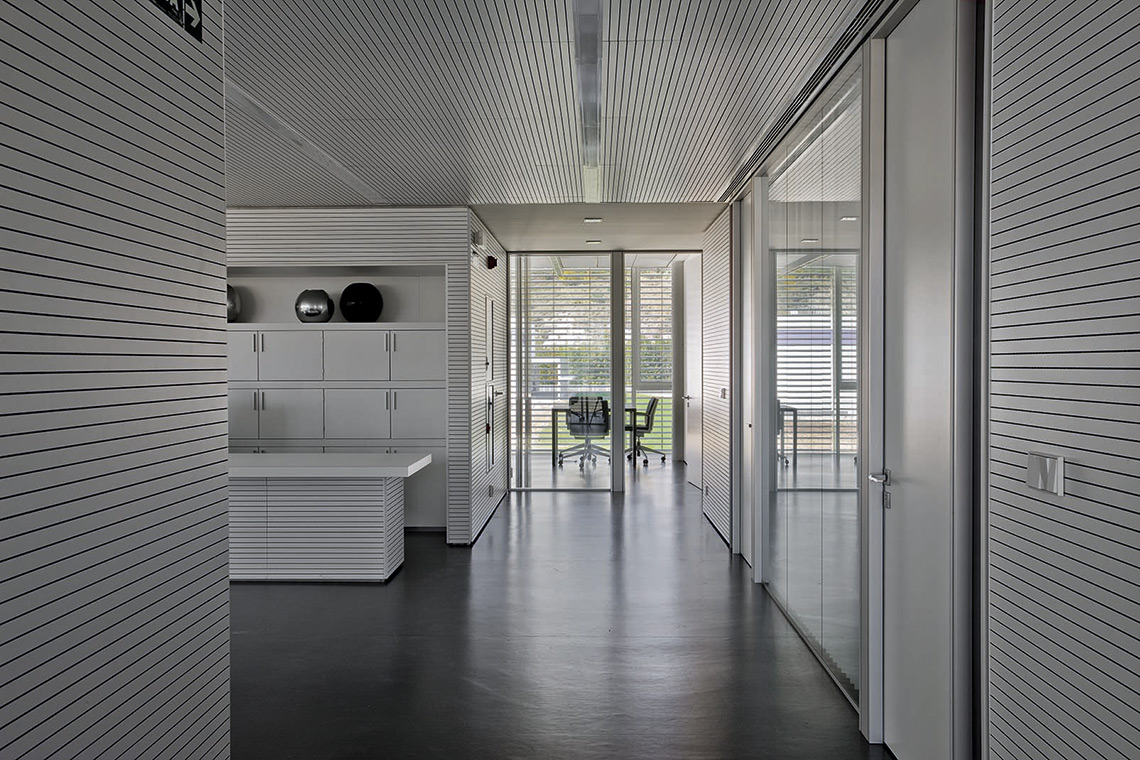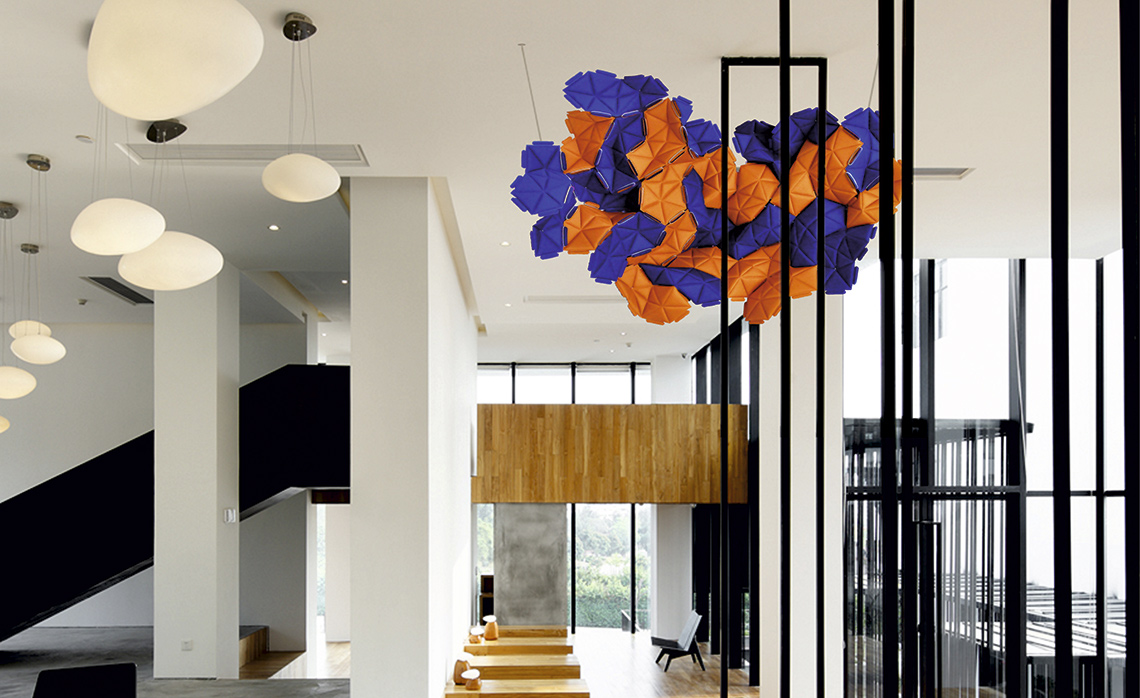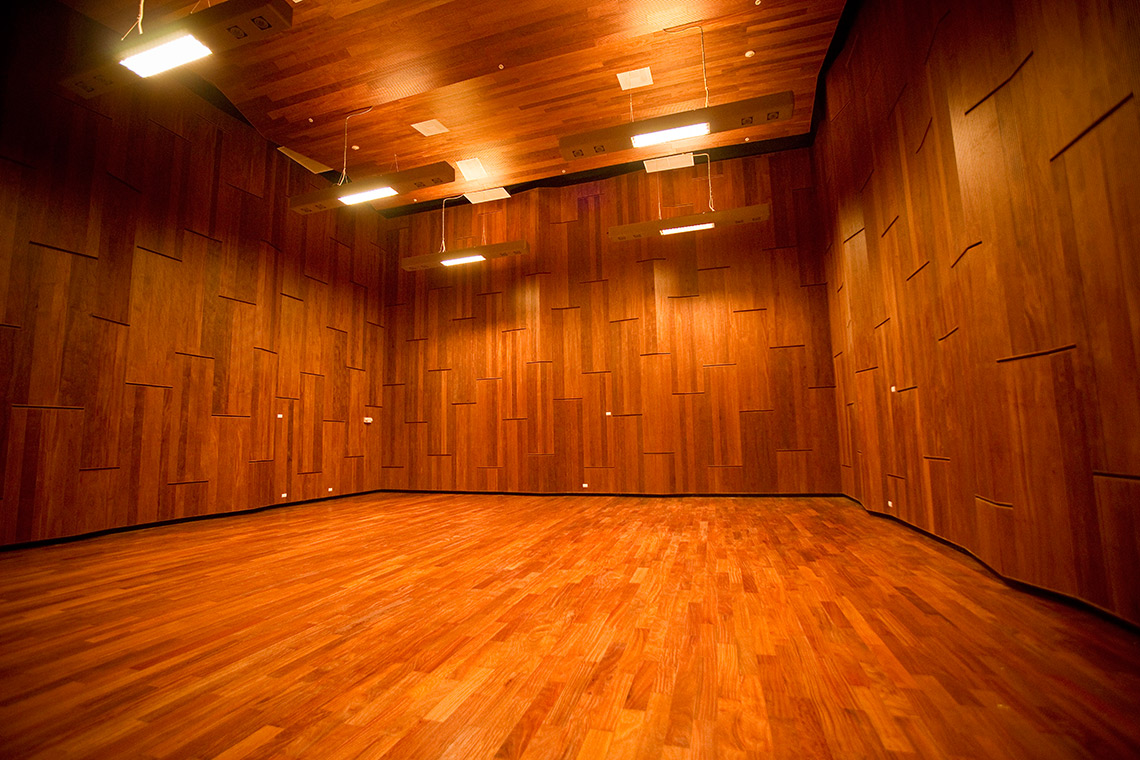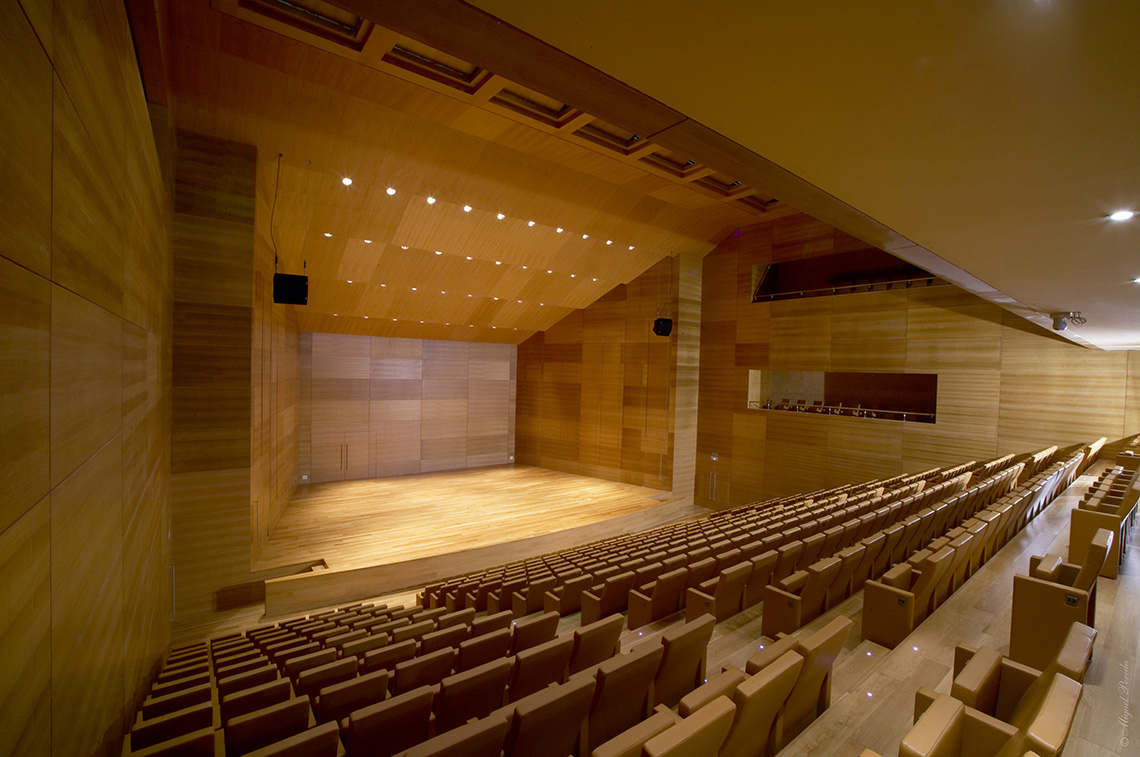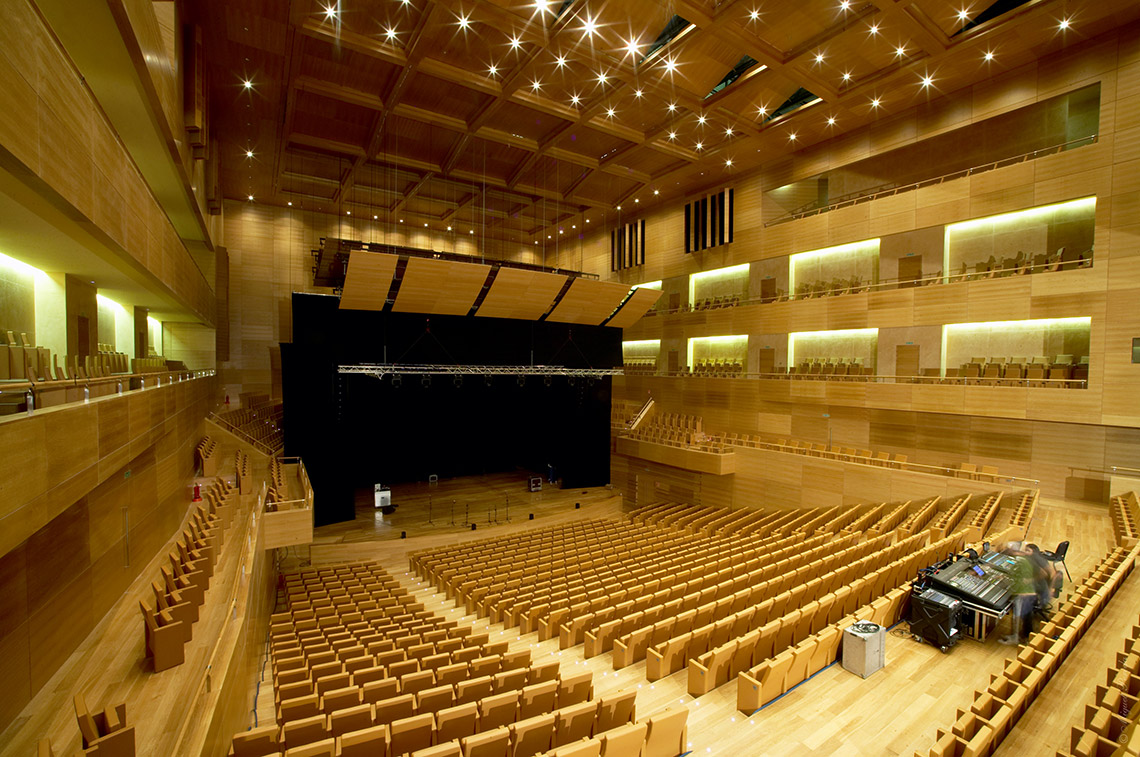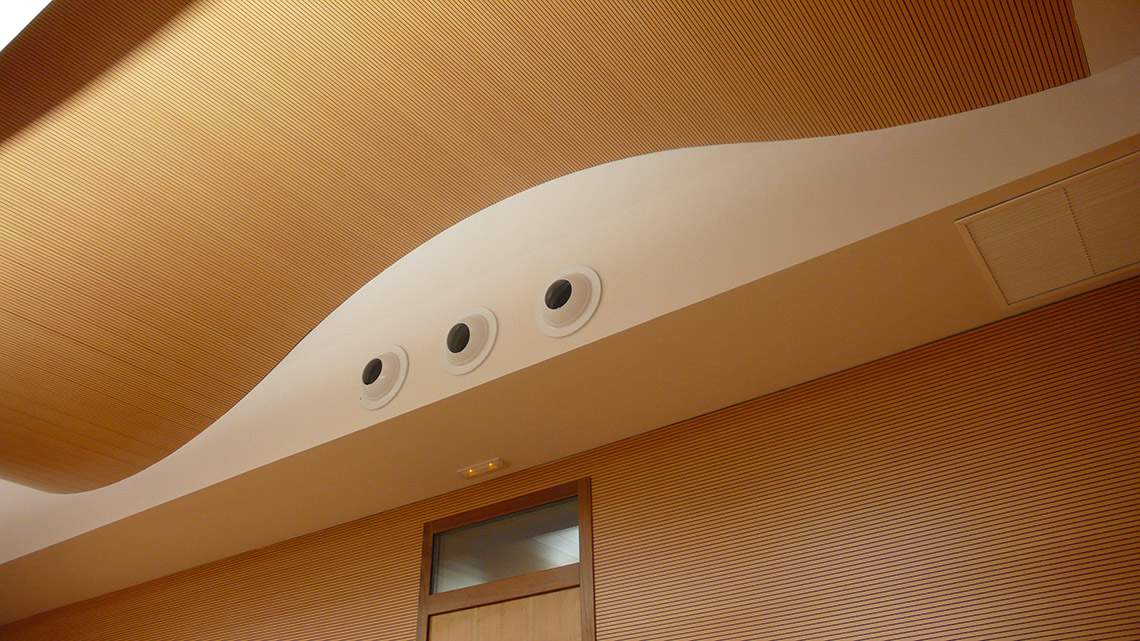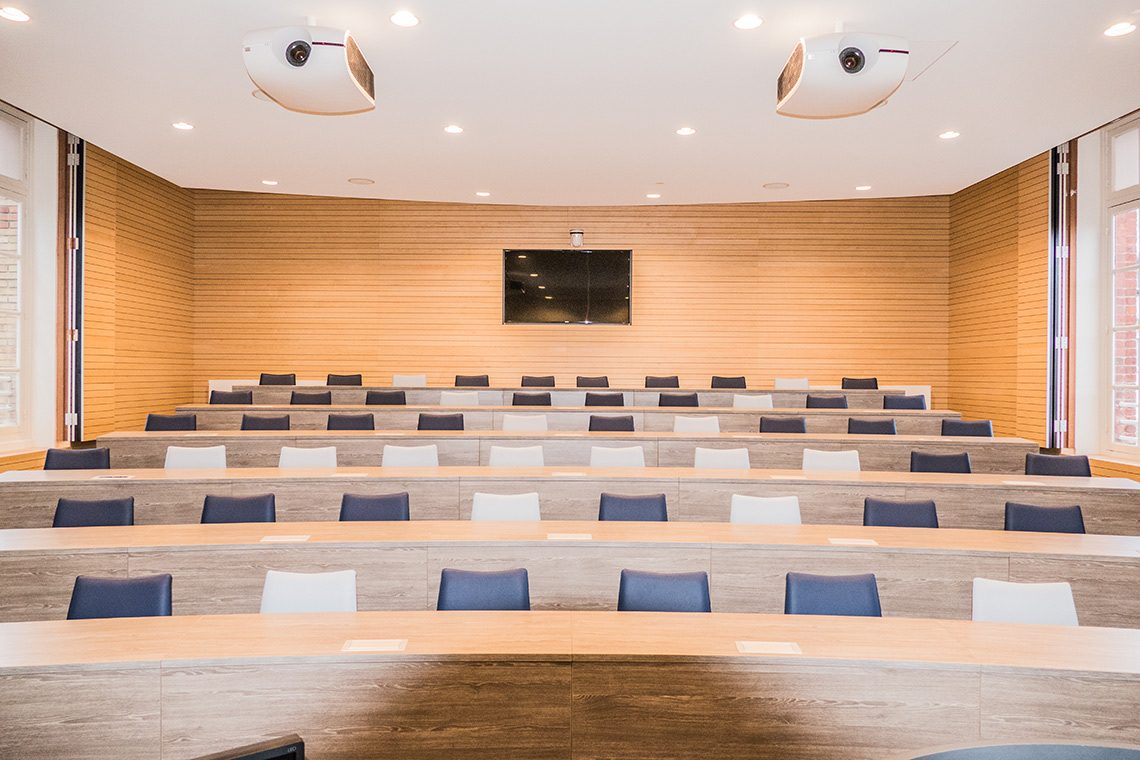An acoustic panel is a special kind of panel made of sound absorbing materials. Its job is to provide sound insulation. Between two outer walls sound absorbing material is inserted and the wall is porous. Thus, when sound passes through an acoustic board, the intensity of sound is decreased. The loss of sound energy is balanced by producing heat energy. Acoustic panels made with sound-absorbent wood are the undisputed protagonists of any acoustic conditioning job.

Acoustic Panels
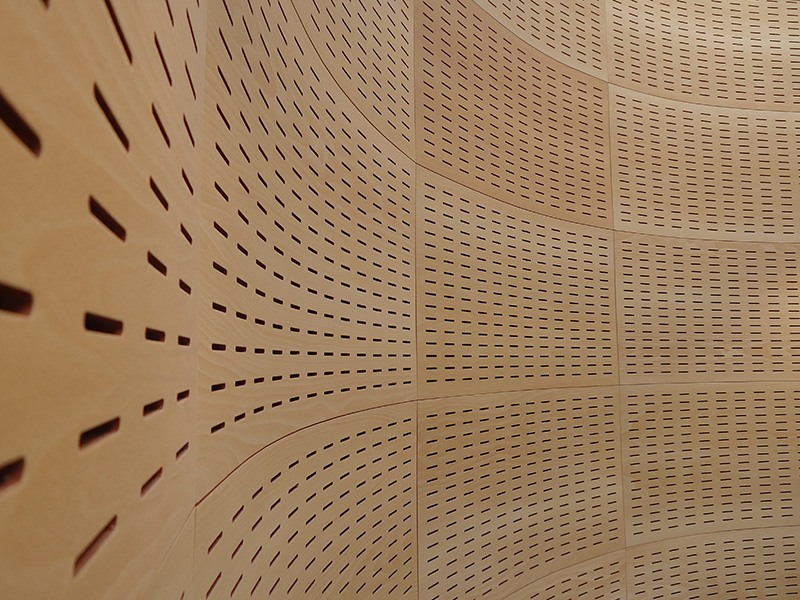
Description
Just like sound insulating materials reflect the sound, the acoustic panels used in wood walls and wood ceilings, let sound enter and then dissipate it. This means that the sound-absorbent wood used to manufacture acoustic panels serves this purpose thanks to the multitude of different types of perforations (round, oblong, square, channelled and even a combination of them) that allow air to pass through them so that the material can dissipate the sound waves as they collide against the walls of the cavity.
The thickness of the acoustic panel is also a key factor in determining maximum absorption. The sound penetrates wood panels only to a certain depth, after which added thickness is no longer necessary.
In terms of sound absorption, the most important aspects governing the behaviour of acoustic panels made of sound-absorbent wood are:
- Wood density
- Porosity
- Panel size and shape
- Size, shape and location of the slots or holes
- Mounting distance from the ceiling or wall surface.
Finally, the acoustic effectiveness of acoustic panels is expressed (among other parameters) in terms of Sound Absorption Coefficient, defined as the fraction of energy of incident sound waves which is absorbed by the panel.
The main supports used in the construction of acoustic panels are the following:
- MDF
- Plywood
- HPL Phenolic Compact
- Solid Wood
Acoustic walls can offer many benefits:
- Control unwanted noise entering a room
- Control unwanted noise leaving a room
- Reduce reverberation (echoing) of sound by absorbing and deadening/dampening the noise in a room
- Increase clarity of speech
- Increase privacy, productivity and general well being
Characteristics
APPLICATIONS
- Auditoriums and conference rooms
- Commercial and leisure spaces
- Educational buildings
- Health care buildings
- Hotels
- Cinemas and theater halls
- Offices and meeting rooms
- Sports facilities
- Public buildings
- Recording studios
- Religious centers
- Residencial buildings
TYPES
- Perforated acoustics wall and ceiling panels
- Micro-perforated acoustic wall and ceiling panels
- Channeled acoustic wall and ceiling panels
- Fabric and foam wall and ceiling panels
- Special panels: integrated illumination, movable partitions etc.
FINISHES
- Wood veneer
- Compact laminate
- HPL Laminated
- Melamine
- Lacquered
Technical Information
| Thickness (mm) | 12 – 92 | Finishes | Wood Veneer | |
| Compact Laminate | ||||
| Width (mm) | 160 – 1200 | HPL | ||
| Lacquer | ||||
| Length (mm) | 600 – 2430 | Melamine | ||
| Fabric | ||||
| Support | MDF | Quality | Standard | |
| Plywood | Fire Resistant | |||
| Solid Wood | ||||
| Compact Laminate |




